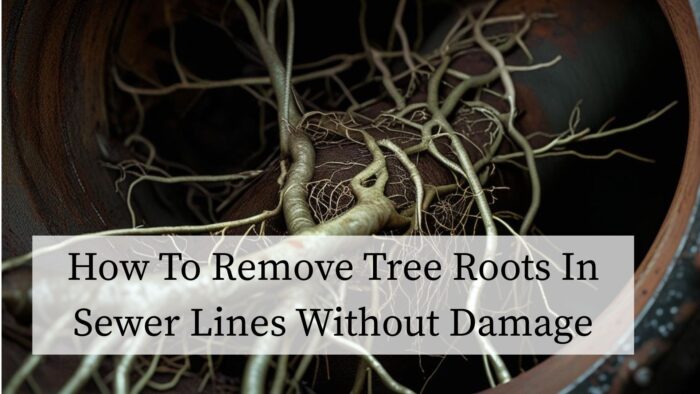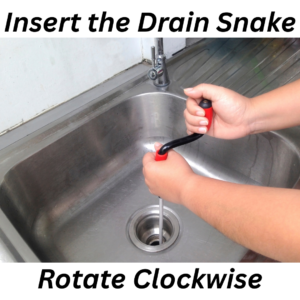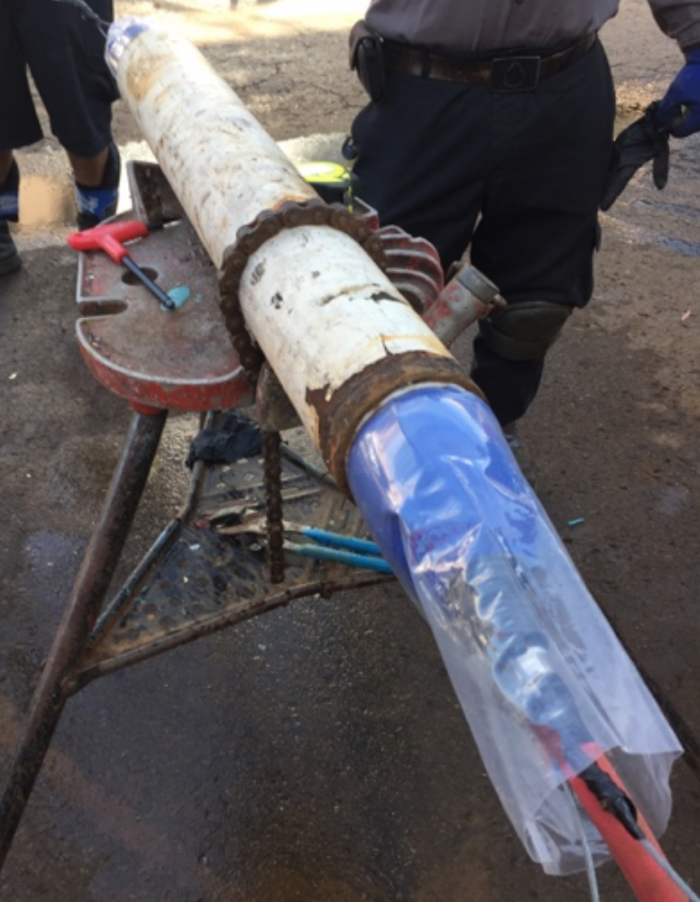How To Remove Tree Roots In Sewer Lines Without Damage
If you frequently encounter slow draining showers and bathtubs, or a backed up toilet or sink drain, chances are that your sewer system has been invaded by tree roots. While initially they may cause slow draining showers or sink, if not taken care of early, they might end up shutting your sewer system altogether. In the worst case scenario, they may end up cracking your sewer lines and causing thousands of dollars in damages.
However, the good news is that there are ways to get rid of tree roots in sewer lines, either yourself or by asking for professional help, depending on the extent of the intrusion. While learning how to get tree roots out of sewer lines the right way from your drain line requires a bit of experience, if you are committed to the cause of removing tree roots from sewer lines then you have come to the right place.
Let’s go through the most efficient ways to remove tree roots in sewer lines as well as on how to stop the issue from recurring.
Why Do Tree Roots Grow Into Sewer Lines & How To Remove Tree Roots From Sewer Lines ?
Well, tree roots naturally gravitate towards places with high moisture content and nutrients; and where do they find moisture and nutrients in abundance? the sewer lines! Tiny cracks or old joints in the pipe lines emulate vapor, attracting roots that invade and expand, thus causing blockage and pipe damage. Knowing how to fix roots in sewer line systems before the damage becomes serious and can save the hefty repair cost.
Removal Of Tree Roots From Sewer Line:
The following are several safe and effective ways to remove roots without harming your sewer lines:
1. Mechanical Root Cutting
A motorized auger is used by the plumber with a rotating blade that cuts through roots. It does clear the blockage however it doesn’t kill the roots.
2. Hydro Jetting
Water is blasted at a high pressure through the pipes and removes the roots and debris. This is a non-invasive and pipe safe method to get tree roots out of the sewer line systems quickly and effectively.
3. Chemical Root Killers
Another method on how to get tree roots to stop growing in the sewer lines is foaming root killers (with ingredients like Dichlobenil or Copper sulfate) that can kill roots and prevent regrowth. Always use products designed for sewer use as they are biodegradable and environmentally-safe.

What Is the Easiest Way to Remove Tree Roots?
The easiest way out from the clutches of tree roots is to use foaming root killers that coat the inside of pipes and kill the roots over time. It is an easy do-it-yourself solution, which works best when combined with professional cleaning.
If you’re wondering how to remove tree roots from sewer lines without digging or costly pipe replacement, this method is a great stepping stone. However, if the problem is extensive you may need to take it further by hiring a professional to get rid of the tree roots in the sewer lines who may suggest services like sewer camera inspection, hydro jetting, or in cases of extreme pipe damage, trenchless pipe repair.
Now, you may ask the question: what is trenchless sewer repair? Essentially, trenchless sewer repair is the modern method of replacing or fixing underground pipes without digging up your yard. By using small access points, experts can reline or burst the underground pipe.
Trenchless sewer repair cost may vary depending on factors such as pipe length and location but generally a 25 to 30 feet of liner cost between $4000 and $6500, although it varies based on a few other factors. The important point to note is that while conventional dig and repair methods might seem cheaper upfront, the restoration bills quickly accumulate to $40,000 in repairs, not to mention the disturbance of dugout backyards, floors, and walls. In a nutshell, while trenchless sewer repair might appear more expensive upfront, it helps avoid costly landscaping and driveway repairs.
How to Prevent Roots from Growing in Sewer Lines?
To avoid dealing with the issue of tree roots growing in sewer lines again, here are a few preventive measures you can undertake:
- Installing a physical barrier between trees and pipes.
- Replacing old clay or cast iron pipes with modern PVC, which is more root intrusion resistant.
- Using root-killing treatments annually.
- Planting trees strategically-away from sewer lines.
- Regularly schedule drain cleaning and inspection service from professionals, ensuring the drains are always free from intrusions and any minor issues are addressed before they escalate into bigger repairs.
By understanding the damages caused by tree roots intrusion into sewer lines, prevention becomes the next priority.
Summary: How to Get Rid of Tree Roots in Sewer Lines Without Damage
Recap of the key strategies:
- Use mechanical or hydro-jetting tools for removal of tree roots in sewer lines.
- Apply chemical roots killers with safety.
- Consider trenchless sewer repair if the pipe damage is severe.
- Use barriers and modern pipe material to help prevent regrowth.
To conclude, whether you’re researching how to fix roots in sewer lines ,learning how to get tree roots out of the sewer line or just someone figuring out how to keep roots from growing in sewer lines, the best approach is a combination of professional services and preventive care.
Remember, knowing how to remove tree roots from sewer lines is only part of the battle – consistent maintenance will keep your plumbing flowing smoothly for years to come.
FAQs About Removing & Preventing Tree Roots in Sewer Lines
- How do you remove roots from drain pipes?
Use a mechanical auger (rooter) to cut through roots, contract professional hydro jetting services to use concentrated pressured water to blow away tree roots or apply a foaming root killer (e.g., copper sulfate) to kill them and flush them out.
- What is the easiest way to remove tree roots?
Cut small roots with a saw or loppers; for larger ones, use a root saw or stump grinder. Chemical root killers offer a less labor-intensive option, but make sure they are environmentally-friendly and biodegradable options. Using hydro jetting services also provides an environmentally-friendly way to wash away all intrusions.
- How to prevent roots from growing in sewer lines?
Regularly treat pipes with root-killing chemicals, repair cracks, and replace old clay or cast iron pipes with PVC. Installing root barriers can also help. Conducting routine sewer camera inspections also helps with keeping tabs on the state of the sewer system.








